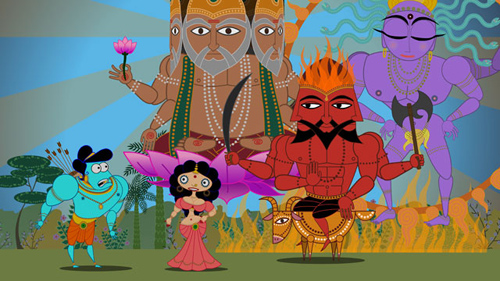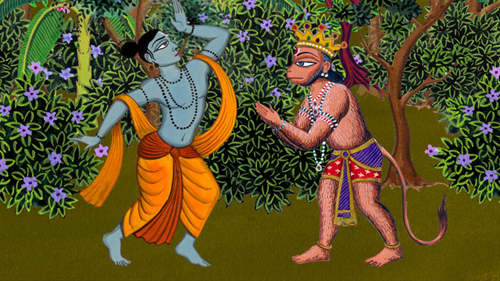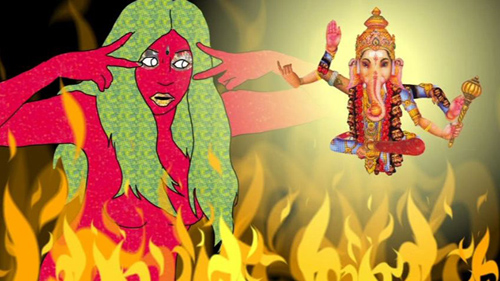By Bill Benzon
Imagine that you've moved from San Francisco to Trivandrum in Kerala, India, to be with your husband. Six months later you fly to New York for a week. While stateside your beloved husband sends you an email saying, "don't come back, I want a divorce".
What do you do?
When that happened to Nina Paley, she made a feature-length, Sita Sings the Blues, in which she set her story in counterpoint to the story of Sita and Rama from the Ramayana, one of the central texts of Hinduism. Sita too had been dumped by her husband in a way that was mysterious to her.
Paley's initial inspiration for the film came from an unlikely source, the music of Annette Hanshaw, a now-forgotten pop star from the 1920s. Hanshaw was singing about how Paley felt. Back in 2003, and without any initial intention of making a feature-length film, she decided to use one of them, "Mean to Me", in a short animated film illustrating an episode from the Ramayana. That video of "Mean to Me" did well on the festival circuit and it did well online. Paley did more videos, and got more views.

Then she decided to tell the story of Rama and Sita in a more traditional narrative form and to add her own story into the mix. Then, wouldn't you know it, her muse demanded that she add a fourth element to the film: kibitzing bystanders. Paley invited three Indian friends into a recording studio and asked them questions about the Ramayana, which all knew from childhood. They shared their versions of the story and tossed in their opinions on life and relationships, as people are inclined to do. This gives us four different strands of action.
Paley created a different visual style for each of those strands: music videos, Nina's story, Ram and Sita, commentary. And she created a fifth style film's climax, the Agni Pariksha. Rama had Sita prove her innocence in the traditional way, by walking through fire. She came through fine. He still dumped her anyhow.

For this scene Paley had Reena Shah, an actress and classical Indian dancer who'd voiced the part of Sita, dance in a studio. Then she traced Shah's movements into the film. This scene happens in the film after Nina gets the fatal email. She screams and WHAM! she disappears into Sita's fire walk.
There we have it: five visual styles, several versions of the same man-dumps-woman story, American pop tunes from the 1920s, and snippets from contemporary Hindu cards and magazines collaged into the film.

When the time came to put the completed film before the public, Paley got slammed by copyright issues. While Hanshaw's recordings were in the public domain, the underlying songs were not. Paley ended up spending $70,000 in legal fees and licensing fees just so she could release the film into the public domain.
She premiered it at the Berlin International Film Festival in 2008 where it won a Crystal Bear award, the first of many awards. In 2009 she released it online for free download and toured it to festivals on six continents.
Meanwhile, she's begun exploratory work on a new project, Seder-Masochism: A Self-Hating Haggadah. This will be a retelling of the Exodus story. I, for one, can't wait.
Bill Benzon is an independent scholar, writer, musician and photographer living in Jersey City, NJ. He published Beethoven¹s Anvil: Music in Mind and Culture in 2001 and blogs at New Savanna, The Valve, and Replicated Typo.